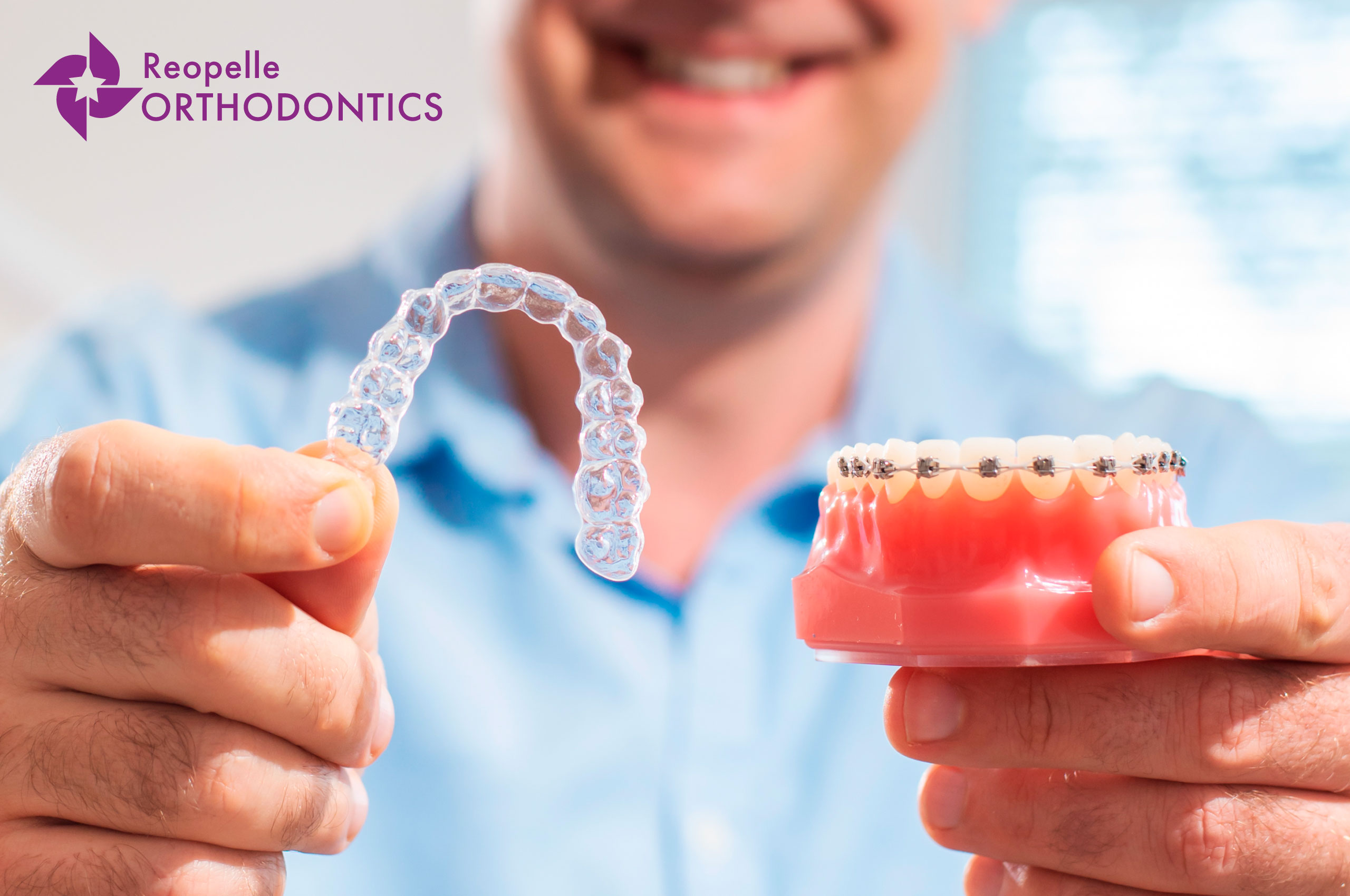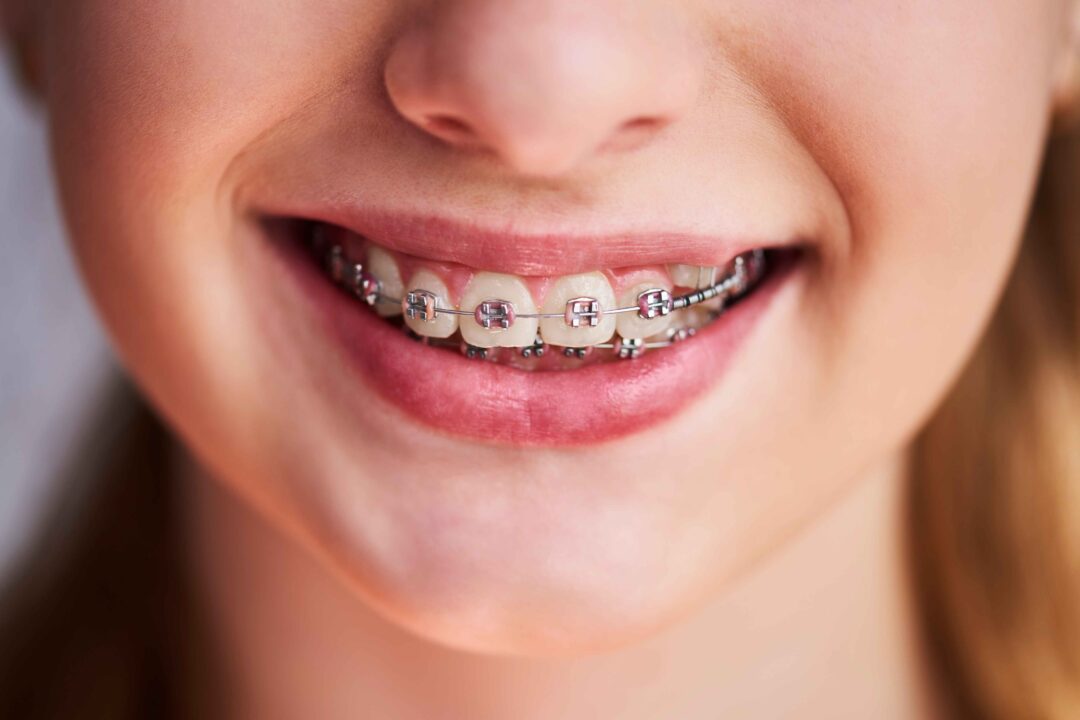How to Choose Between Traditional Braces and Invisalign Clear Aligners?

What makes orthodontics available for almost any patient, regardless of age and medical issues, is the fact that orthodontic treatments work with mechanical processes, meaning fewer chemicals and interventions.
Orthodontics works by applying force to the teeth to create a change of position that gradually leads them into proper alignment. The process involves various components and principles, including periodontal movements.
The first step must always be diagnosis and treatment planning when needed. The orthodontist will examine the patient’s teeth, jaws, and facial structure to assess their alignment and determine the most suitable treatment approach. They consider factors like bite malocclusions, spacing issues, and facial symmetry.
If, after the examination, the doctor determines you do not need to undergo orthodontic treatment, you will probably have to come back for periodic checkups.
In cases where the patient does need orthodontic treatment, the doctor might indicate the most suitable treatment alternatives to start. Before wearing any type of teeth aligner, the orthodontist will check X-rays of your mouth.
Braces are the most popular orthodontic appliance since they can correct a wide variety of dental issues. Nowadays, Invisalign clear aligners are another popular option among patients, which opens the debate “Traditional braces vs. Invisalign.”
Traditional braces consist of brackets bonded to the teeth and connected through archwires, while aligners are custom-made, clear molds that fit over the teeth. Both treatment alternatives work with biomechanics.
How Does Treatment With Braces Work?
Orthodontic forces exerted by braces or aligners create a biomechanical response in the periodontal ligament, the connective tissue between the teeth and the surrounding bone. This pressure initiates a movement process, allowing the repositioning of teeth.
Throughout the treatment, the orthodontist schedules regular appointments to adjust braces or progress to the next set of aligners. These dental checkups involve modifying the forces and angles applied to your teeth, ensuring continuous progress.
After your teeth are in their new and correct position, the retention phase follows to maintain the results. Retainers, either removable or fixed, are crucial to stabilizing the teeth in their new positions while the rest of the mouth is adapting to it.
Keep in mind that orthodontic treatment is highly personalized, which is why you need a licensed and experienced doctor.
How Does Orthodontics Help Prevent and Solve Functional, Oral, and Overall Health Issues?
Misaligned teeth not only affect the facial structure and make your smile look different, but they also affect your oral health and dental function.
Orthodontics help correct bite problems, such as overbite, underbite, crooked teeth, crossbite, open bite, and more. All of these issues might cause jaw pain, speech problems, and gum disease, which is why orthodontic treatment is so important in a person’s life.
Is it no secret that aligned teeth are easier to clean, and that reduces the risk of oral problems, such as gum diseases. Orthodontic treatment can achieve better oral hygiene through smile symmetry. If there are no crooked or crowded teeth, your mouth has fewer hideouts for bacteria.
Some of the main functions of the mouth are biting and speaking, and both involve the participation of teeth. When you have misaligned teeth, you are more prone to bite your tongue and inner cheeks.
But malocclusion issues, such as open bites, difficult pronunciation, and enunciation. Orthodontic treatment helps address issues like lisps or other speech impediments.
Orthodontic treatment is essential to overall dental health, from your hygiene practices to the way you chew your foods.
How Do Orthodontic Braces Work?
Let’s dive a little deeper into the defining characteristics of conventional braces. Orthodontic braces are dental appliances that correct irregularities in the teeth and jaws.
Traditional braces consist of metal brackets and metal wires. This type of dental braces is highly effective and versatile in treating various orthodontic issues, from mild to severe cases. Because of being metallic, these braces are very resistant.
As with all in life, traditional braces have advantages and disadvantages. Some advantages of conventional braces are:
- Cost-effective in comparison to other treatment alternatives.
- Suitable for treating complex orthodontic cases.
- Resistant to staining and discoloration.
- The metal brackets withstand high forces during treatment.
And some disadvantages of traditional braces are:
- Highly visible, which may affect some people’s aesthetics.
- Require regular adjustments and visits to the orthodontist.
- Metal components can cause discomfort and irritation to the lips and soft tissues of the mouth.
- Oral hygiene can be more challenging due to the presence of brackets and wires.
What Are Clear Ceramic Braces?
Are they different from conventional metal braces? The answer is both yes and no. Clear ceramic braces are similar to traditional braces, but the brackets are made of tooth-colored or clear ceramic material, making them less noticeable.
The advantages of ceramic braces:
- Less noticeable than traditional braces.
- Suitable for patients who desire a more discreet treatment option.
- Similar effectiveness as traditional braces in correcting teeth alignment.
Disadvantages of having clear ceramic braces:
- They are more expensive than traditional braces.
- Ceramic brackets can be more prone to breakage in comparison to metal brackets.
- Require a good oral hygiene routine to prevent staining and discoloration.
What Are Clear Aligners, and How Are They Different From Clear Braces?
Clear aligners differ from clear braces. Clear aligners are a type of orthodontic treatment that consists in shifting teeth with the help of transparent molds.
The mechanical principle behind Invisalign clear aligners is the same as behind traditional braces. But everything else is quite different. These aligners are removable and virtually invisible, offering a discreet alternative.
Invisalign aligners offer many benefits that change the whole experience of orthodontic treatment:
- Clear aligners are nearly invisible when worn, allowing orthodontic patients to undergo straightening treatment without drawing all the attention to their teeth.
- The removability feature offers several benefits, such as the ability to eat and drink without restrictions and easy maintenance of oral hygiene. However, dental patients need to wear their Invisalign trays for around 22 hours a day.
- Clear aligners are made from smooth plastic material, which reduces the likelihood of irritation and discomfort since there are no sharp edges or reliefs.
- Because the orthodontist designs your series of aligners from a 3D scan of your mouth, Invisalign ensures a comfortable and precise fit, resulting in a more efficient treatment outcome.
Despite being so revolutionary and efficient, clear aligners also have some disadvantages:
- Compliance is essential, as neglecting to wear aligners as instructed may prolong the treatment time or compromise the final results. It is crucial to wear aligners as your doctor indicates; typically, 20-22 hours each day.
- Clear aligners are suitable for mild to moderate orthodontic cases. Complex cases or severe malocclusions may require alternative treatment options such as metal braces.
- Some patients may experience slight speech changes during the initial adjustment period.
- Clear aligner treatment can be more expensive than traditional braces, depending on the specific case and the length of treatment required.
Is Invisalign Really Better Than Braces? Braces vs. Invisalign Pros and Cons
Invisalign clear aligners and traditional metal braces each have their own advantages and considerations, making it important to evaluate individual orthodontic needs when determining the most suitable treatment option.
Though Invisalign offers marvelous benefits, like removability, comfort, and discretion. No food restrictions, no real orthodontic emergencies, better dental hygiene, etc.
But while Invisalign can effectively treat mild to moderate malocclusion cases, traditional braces are often preferred for more complex or severe orthodontic issues. In severe dental cases, braces provide:
Versatility and predictability since orthodontists know they can address a wide range of orthodontic concerns with a predictable percentage of success.
Braces ensure consistent force application with lower patient compliance. Though traditional braces also depend on how well the patient follows the food restrictions and hygiene indications, it’s not possible for patients to lose them or forget to wear them.
In the end, the choice between Invisalign and conventional braces depends on various factors, and you will need an orthodontist’s point of view.
Orthodontic Treatment Options – Orthodontist, Roanoke
End the debate in your head and have a team of experts help your smile.
Dr. Ann D. Reopelle is more than ready to examine your teeth and decide whether you need treatment or not. She can also guide you in choosing the best treatment alternative since Reopelle Orthodontics works with the latest technologies and traditional approaches.



